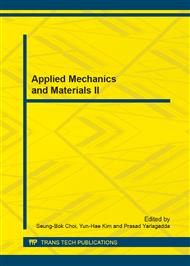p.221
p.226
p.232
p.236
p.240
p.246
p.254
p.259
p.265
Supersonic Bi-Directional Flying Wing Wave Drag Optimization Based on Alternative Form of CST Method
Abstract:
Bi-directional Flying Wing (BFW) is a new supersonic civil transport shape concept that aims to meet the conflict requirements of high speed cruise and low speed take-off/landing missions. In this paper the Class-Shape-Transformation (CST) shape parameterization method is modified to represent the BFW shape, and new basis functions suitable for the BFW airfoil representation are constructed. The Far-field Composite Element (FCE) wave drag optimization is performed on both the flat bottom and symmetric BFW configurations, and the drag reduction effects and result precision are surveyed. It is suggested that significant wave drag reduction can be achieved by the FCE optimization for both the flat bottom and the symmetric BFW configurations. The wave drag coefficients with sufficient precision can be obtained in the FCE optimization of the symmetric configuration; while the FCE optimization results of the flat bottom one are not accurate enough.
Info:
Periodical:
Pages:
240-245
Citation:
Online since:
December 2013
Authors:
Keywords:
Price:
Сopyright:
© 2014 Trans Tech Publications Ltd. All Rights Reserved
Share:
Citation:


